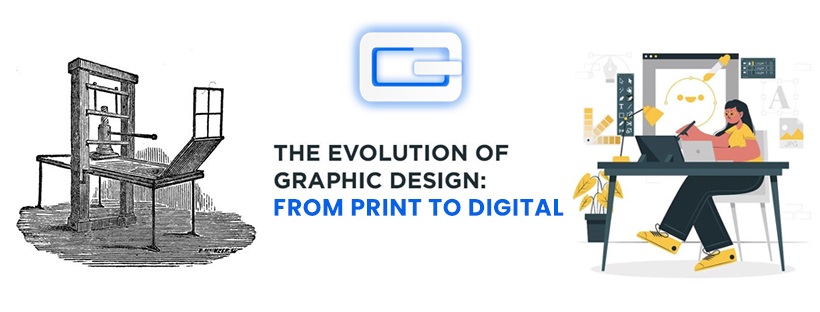Graphic design is a wonderful form of visual communication art that selects, arranges, and combines various visual and verbal elements to express or convey a message. Different graphic design elements include pictures, typography, colours, icons, symbols, etc. From the print era to the current digital revolution, this art form underwent major advances and transcended itself to all-new heights. In this blog post, let’s immerse ourselves in graphic design’s deep history and evolution.
It all started in the 15th century…
The 15th century played an important role in the history of graphic design as printing and book production were developed and led the advancements for designing pages. People called them the compositors or typesetters who designed the typefaces (now called the old styles), taking inspiration for uppercase from the ancient Roman inscriptions and lowercase from the Carolingian period.
Later in the 16th century, French typesetters developed fine typographies, engravings, and illustrations that proved the creativity of graphic designs in the books published and printed. However, the next century, the 17th century, didn’t face any advancements or evolutions in terms of illustrations or designs.
The Rococo movement
Pierre-Simon Fournier was the type-founder for the ‘type family’ with standard measurements based on the French pouce. In the 18th century, these findings transformed woodblock printing, i.e., printing illustrations in books with fine lines, greater detail, different letter widths, ornamental designs, frames, and varying stroke weights.
The Neoclassical movement
In the early 19th century, the designer John Baskerville catalyzed the change from Rococo to Neoclassical—without ornaments or illustrations. Moreover, the neoclassical fonts demonstrated a considerable contrast between the strokes and ensured sharper serifs with the more vertical and geometric axes.
The Industrial Revolution and Globalization
Though it began in the 18th century, more progress with commercial and industrial technologies occurred in the 19th century. This drastically lowered the prices of printing as well as paper. This led to graphic designs spreading widely across the globe. In turn, designers worldwide created more types with innovations in serifs, shadows, decoratives, etc.
Posters were first introduced in this era. And they were printed in lithographies first and then in chromolithographies. Following this path, newspapers and magazines flourished globally with vibrant colours and illustrations. Also, this was the period in which a lot of artistic movements eventuated—Art Nouveau, Bauhaus, and Modernism.
The 20th Century and the Disruption
The inception of personal computers, hardware, and software led to the disruption of graphic design from print to digital. The international typographic style called the ‘Swiss Design’ was widely accepted by corporations. However, American designers were inventing their styles of illustrations in magazines. Post the World War, the magazine designs underwent a paradigm shift. Besides, the advent of televisions, motion graphics, radio, etc. brought about an evolution in visual communication.
Later, the designers from Japan initiated the dynamics and kickstarted graphic design as a profession and the world followed the graphic design evolution. Though design evolution was in place, the handicraft processes remained unchanged.
The late 21st century and digitalization
The internet era of the 1990s not only transformed machines and information technologies but the graphic design. From websites to social media channels, from mobile apps to advertising screens, every aspect of a business needs graphic design. Thus, the need for the decade. In parallel, the complex print and electronic information systems took graphic design to a higher level, while embracing unique styles and typefaces. This gave birth to a new category called contemporary graphic design which blends both print and digital designs.
Conclusion
Today, graphic design is not just an art of visual elements. It is more about visual appeal, UI/UX, video editing, animations, motion graphics, modernistic illustrations, logos, etc. After all, creativity is the backbone of every advancement in this field.




